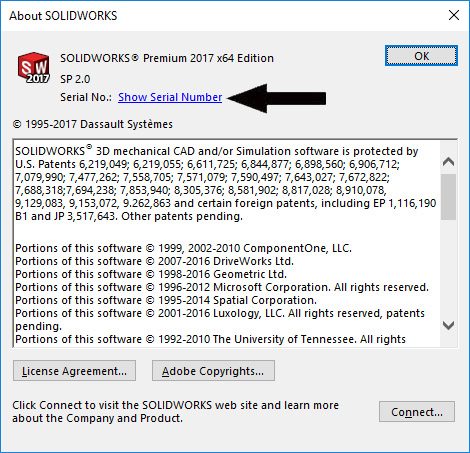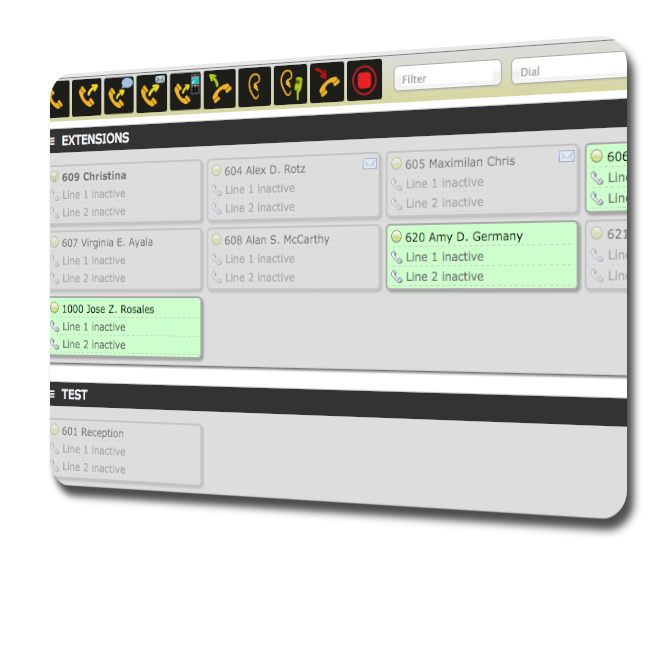This is a short introduction to the FOP2 user interface (showing the basic elements and interactions you can perform with the presentat. Vulnerability Disclosure Timeline: 2018-01-08: Non-Public Disclosure (Vulnerability Laboratory - Shared Customer Research Feed) Discovery Status: Published Affected Product(s): Nicolas Gudino (Asternic) Product: Flash Operator Panel 2 - User Control Panel (Web-Application) CentOS 2.31.03, Debian 2.31.03 & RPI-ARM 2.30.03.
An arc-fault circuit interrupter (AFCI) also known as an arc-fault detection device (AFDD)[1] is a circuit breaker that breaks the circuit when it detects the electric arcs that are a signature of loose connections in home wiring. Loose connections, which can develop over time, can sometimes become hot enough to ignite house fires. An AFCI selectively distinguishes between a harmless arc (incidental to normal operation of switches, plugs, and brushed motors), and a potentially dangerous arc (that can occur, for example, in a lamp cord which has a broken conductor).
AFCI breakers have been required for circuits feeding electrical outlets in residential bedrooms by the electrical codes of Canada and the United States since the beginning of the 21st century; the U.S. National Electrical Code has required them to protect most residential outlets since 2014,[2] and the Canadian Electrical Code has since 2015.[3] In parts of the world using 230 V, where the higher voltage implies lower currents, specifically Western Europe and the UK, adoption is slower, and their use is optional, except in high risk cases.
In the US, arc faults are one of the leading causes for residential electrical fires.[4] Each year in the United States, over 40,000 fires are attributed to home electrical wiring. These fires result in over 350 deaths and over 1,400 injuries each year.[5]
Conventional circuit breakers only respond to overloads and short circuits, so they do not protect against arcing conditions that produce erratic, and often reduced current. AFCIs are devices designed to protect against fires caused by arcing faults in the home electrical wiring. The AFCI circuitry continuously monitors the current and discriminates between normal and unwanted arcing conditions. Once detected, the AFCI opens its internal contacts, thus de-energizing the circuit and reducing the potential for a fire to occur.[6]
Operating principle[edit]
The electronics inside an AFCI breaker detect electrical current alternating at characteristic frequencies, usually around 100 kHz, known to be associated with wire arcing, which are sustained for more than a few milliseconds. A combination AFCI breaker provides protection against parallel arcing (line to neutral), series arcing (a loose, broken, or otherwise high resistance segment in a single line), ground arcing (from line or neutral to ground), overload protection and short circuit protection. The AFCI will open the circuit if dangerous arcing is detected.
Flash Operator Panel 2 Keygen Free
When installed as the first outlet on a branch circuit, AFCI receptacles provide series arc protection for the entire branch circuit. They also provide parallel arc protection for the branch circuit starting at the AFCI receptacle. Unlike AFCI breakers, AFCI receptacles may be used on any wiring system regardless of the panel.
Electrical code requirements[edit]
US and Canada[edit]
Starting with the 1999 version of the National Electrical Code in the United States, and the 2002 version of the Canadian Electrical Code in Canada, the national codes require AFCIs in all circuits that feed outlets in bedrooms of dwelling units. As of the 2014 NEC, AFCI protection is required on all branch circuits supplying outlets or devices installed in dwelling unit kitchens, along with the 2008 NEC additions of family rooms, dining rooms, living rooms, parlors, libraries, dens, bedrooms, sunrooms, recreation rooms, closets, hallways, laundry areas, and similar rooms and areas. They are also required in dormitory units. This requirement may be accomplished by using a 'combination type' breaker—a specific kind of circuit-breaker defined by UL 1699—in the breaker panel that provides combined arc-fault and overcurrent protection or by using an AFCI receptacle for modifications/extensions, as replacement receptacles or in new construction, at the first outlet on the branch. Not all U.S. jurisdictions have adopted the NEC's AFCI requirements so it is important to check local code requirements.
The AFCI is intended to prevent fire from arcs. AFCI circuit breakers are designed to meet one of two standards as specified by UL 1699: 'branch' type or 'combination' type (note: the Canadian Electrical Code uses different terminology but similar technical requirements). A branch type AFCI trips on 75 amperes of arcing current from the line wire to either the neutral or ground wire. A combination type adds series arcing detection to branch type performance. Combination type AFCIs trip on 5 amperes of series arcing.
AFCI receptacles are an alternative solution to AFCI breakers. These receptacles are designed to address the dangers associated with both types of potentially hazardous arcing: parallel and series. AFCI receptacles offer the benefit of localized test and reset with such buttons located on the face of the device. This can save a journey to the breaker panel but can also encourage simply resetting by a user without investigating the underlying fault, as would presumably happen if someone with access to the electrical panel was notified.
Flash Operator Panel 2 Keygen Code
In 2002, the NEC removed the word 'receptacle', leaving 'outlets', with the effect that lights and other wired-in devices such as ceiling fans within bedrooms were added to the requirement. The 2005 code made it clearer that all outlets must be protected despite discussion in the code-making panel about excluding bedroom smoke detectors from the requirement. 'Outlets' as defined in the NEC includes receptacles, light fixtures and smoke alarms, among other things. Basically, any point where AC electricity is used to power something is an outlet.

As of January 2008, only 'combination type' AFCIs meet the NEC requirement. The 2008 NEC requires the installation of combination-type AFCIs in all 15 and 20 ampere residential circuits with the exception of laundries, kitchens, bathrooms, garages, and unfinished basements, though many of these require GFCI protection. The 2014 NEC adds kitchens and laundry rooms to the list of rooms requiring AFCI circuitry, as well as any devices (such as lighting) requiring protection.[7]
United Kingdom[edit]
In the UK, the Wiring Regulations 18th edition (BS 7671:2018) is the first edition to make any mention of arc fault devices, and indicate they may be installed if the design has an unusually high risk of fire from arc faults. The annexes relating to testing indicate than when AFDDs are installed, their correct operation must be verified before completion, but the method of testing is not described. This is in contrast to RCDs where a number of trip times at different fault current levels must be verified.[8]
Germany[edit]
The German Wiring rules VDE 100, recommend AFDDs for high risk situations, and lists elderly care homes, community centres and kindergartens as examples.
Limitations[edit]
AFCIs are designed to protect against fires caused by electrical arc faults. While the sensitivity of the AFCIs helps in the detection of arc faults, these breakers can also indicate false positives by identifying normal circuit behaviors as arc faults. For instance, lightning strikes provide voltage and current profiles that resemble arc faults, and vacuum cleaners and some laser printers trip AFCIs. This nuisance tripping reduces the overall effectiveness of AFCIs. Research into advancements in this area is being pursued.[9]

AFCIs are also known to be sensitive (false tripping) to the presence of radio frequency energy, especially within the so-called high frequency spectrum (3-30 MHz) which include legitimate Citizens Band and Amateur Radio operations. Sensitivities and mitigation have been known since 2013.[10]
AFCI circuit breakers include a standard inverse-time circuit breaker but provide no specific protection against glowing connections also known as a high resistance connection, high line voltages or low line voltages.
An AFCI does not detect high line voltage due to an open neutral in a multiwire branch circuit. A multiwire branch circuit has both energized wires of a 120-240 V split phase service. If the neutral is broken, devices connected from a 120 V leg to the neutral may experience excess voltage, up to twice normal.
AFCIs do not detect low line voltage. Low line voltage can cause electromechanical relays to repeatedly turn off and on. If current is flowing through the load contacts it causes arcing across the contacts as they open. The arcing can oxidize, pit and melt the contacts. This process can increase the contact resistance, superheat the relay and lead to fires. Power fault circuit interrupters are designed to prevent fires from low voltage across loads.[citation needed]
Interference with power line networking[edit]

AFCIs may interfere with the operation of some power line communication technologies.[11]


References[edit]
- ^'Do you know an Arc Fault Detection Device (AFDD) can prevent from an electrical fire?'. Schneider Electric.
- ^2014 NEC(210.12)
- ^C22.1-15—Canadian Electrical Code, Part I: Safety Standard for Electrical Installations (23rd ed.). Canadian Standards Association. 2015. Rules 24–724(f) & (g). ISBN978-1-77139-718-6.
- ^Lee, Douglas A.; Trotta, Andrew M.; King, William H. (Aug 2000). 'New Technology for Preventing Residential Electrical Fires: Arc-Fault Circuit Interrupters (AFCIs)'(PDF). Fire Technology. Kluwer Academic Publishers. 36 (3): 145–162. doi:10.1023/A:1015410726786. ISSN0015-2684. Retrieved Feb 26, 2013.
- ^Ault, Singh, and Smith, '1996 Residential Fire Loss Estimates', October 1998, U.S. Consumer Product Safety Commission, Directorate for Epidemiology and Health Sciences.
- ^Source:'Arc Fault Circuit Interrupter (AFCI)FACT SHEET' accessed from http://www.cpsc.gov/CPSCPUB/PUBS/afcifac8.PDFArchived 2010-07-20 at the Wayback Machine, July 22, 2010
- ^'What's NEW about AFCIs in the 2014 NEC? ‹ IAEI Magazine'. Iaeimagazine.org. Retrieved 2017-03-28.
- ^'IET website wiring matters'.
- ^Stephenson, James, Ph.D. 'Eliminating False Positives in the Detection and Location of sub 3ms Faults on AC/DC LinesArchived September 25, 2015, at the Wayback Machine' presented at the 2011 Aircraft Airworthiness & Sustainment Conference on April 19, 2011.
- ^'ARRL Helps Manufacturer to Resolve Arc Fault Circuit Interrupter RFI Problems'. Arrl.org. 2013-11-19. Retrieved 2017-03-28.
- ^'A Work In Progress: Belkin Gigabit Powerline HD Starter Kit Reviewed'. SmallNetBuilder. Retrieved 2017-03-28.
External links[edit]
- AFCIs: Emerging Technology Solutions for Fires Resulting from Electrical Arcing from IAEI News: The Magazine
- Arc Fault Testing and Arc Fault Scenarios, Underwriters Laboratory. Six types of AFCIs are listed.